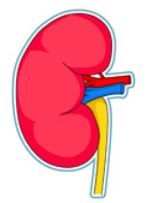Article
Diabetic Nephropathy May Affect Half of Diabetes Patients
Author(s):
Clinical estimates of the incidence of diabetic nephropathy fall far short of the widespread presence of the disease suggested by a recent autopsy study.

Nearly half of all diabetes patients have diabetic nephropathy at their time of death, according to a new study.
In an autopsy study of 150 patients with both type 1 and type 2 diabetes, Dutch researchers found that 49.3% had diabetic nephropathy.
“This study shows that the incidence of diabetic nephropathy in patients with diabetes is much higher than currently assumed. Our findings show a histologically proven diabetic nephropathy in many more patients than would have been estimated clinically,” said lead author Celine Klessens of the Leiden University Medical Center in The Netherlands.
The reported incidence of diabetic nephropathy in both type 1 and type 2 diabetes patients varies considerably. “In clinical practice, a renal biopsy is often not performed to confirm a suspected diabetic nephropathy,” said Klessens.
Approximately 20% to 30% of all diabetes patients will develop evidence of nephropathy, although a higher percentage of type 1 diabetes patients progress to end-stage renal disease.
To determine more accurately the rates of diabetic kidney disease, the researchers collected renal tissue specimens from cases from 1984 to 2004 that were reported to have diabetes in the autopsy report. Using light and/or electron microscopy, they were able to identify those with kidney disease and then grade its severity.
Diabetic nephropathy duration showed a trend for being related to the severity of diabetic nephropathy. “There was no significant correlation with proteinuria and class found. There was a significant difference in estimated glomerular filtration rate (GFR) over the classes,” she said.
The researchers also noted non-significant trends for association between the severity of diabetic nephropathy and death due to cardiovascular disease and duration of diabetes diagnosis.
“Some of these patients had clinical evidence of diabetic nephropathy during their lives, others did not,” Klessens said. “Only 3 out of 150 patients underwent a renal biopsy during their lifetimes.”
Diabetic nephropathy is a clinical syndrome characterized by persistent albuminuria (more than 300 mg/d or more than 200 μg/min) that is confirmed on at least 2 occasions 3 to 6 months apart; progressive decline in the GFR; and elevated arterial blood pressure.
Klessens noted that there is no cure yet for diabetic kidney disease. “Closely monitoring patients with diabetes, for example, by searching for proteinuria, would be helpful in establishing the diagnosis of diabetic nephropathy as soon as possible. To develop therapeutic measurement in order to control or even reverse the renal lesions is the next challenge,” she said, adding that the clinical relevance of silent diabetic nephropathy should be further investigated.
Currently, diabetic nephropathy is the leading cause of chronic kidney disease in the United States. It is also one of the most significant long-term complications in terms of morbidity and mortality for patients with diabetes. Diabetes is responsible for 30% to 40% of all end-stage renal disease cases in the United States.
The researchers presented their results at the American Society of Nephrology Kidney Week 2014 in Philadelphia. “Diabetic Nephropathy Underdiagnosed: Results from an Autopsy Study” (Abstract SA-PO273)




